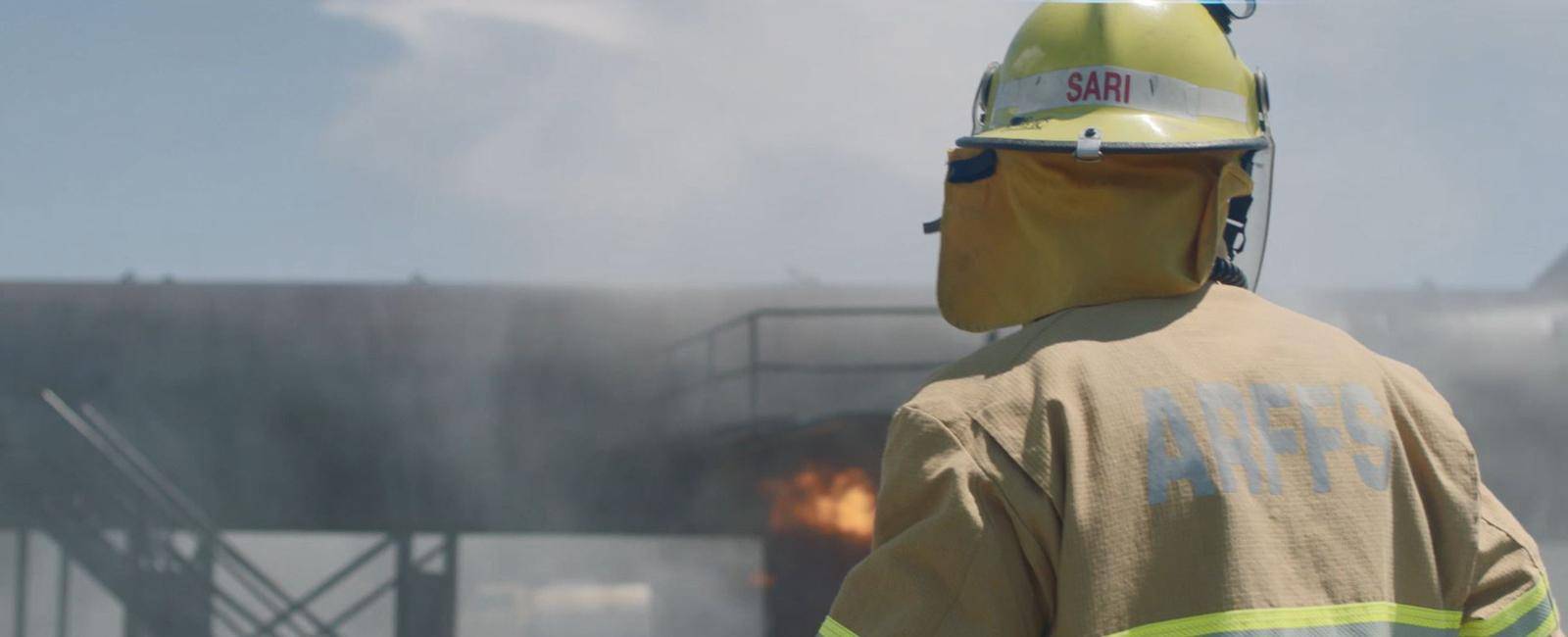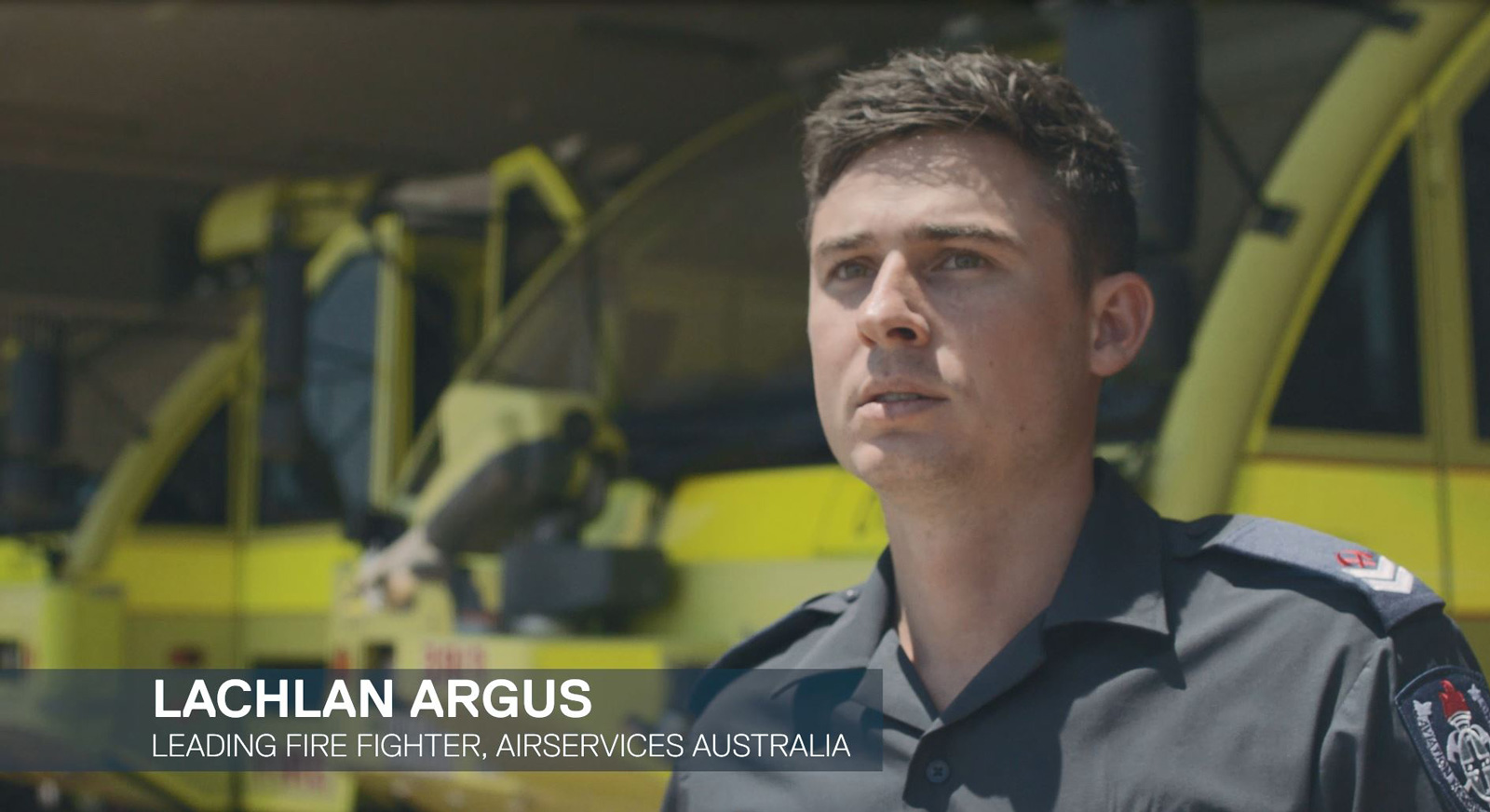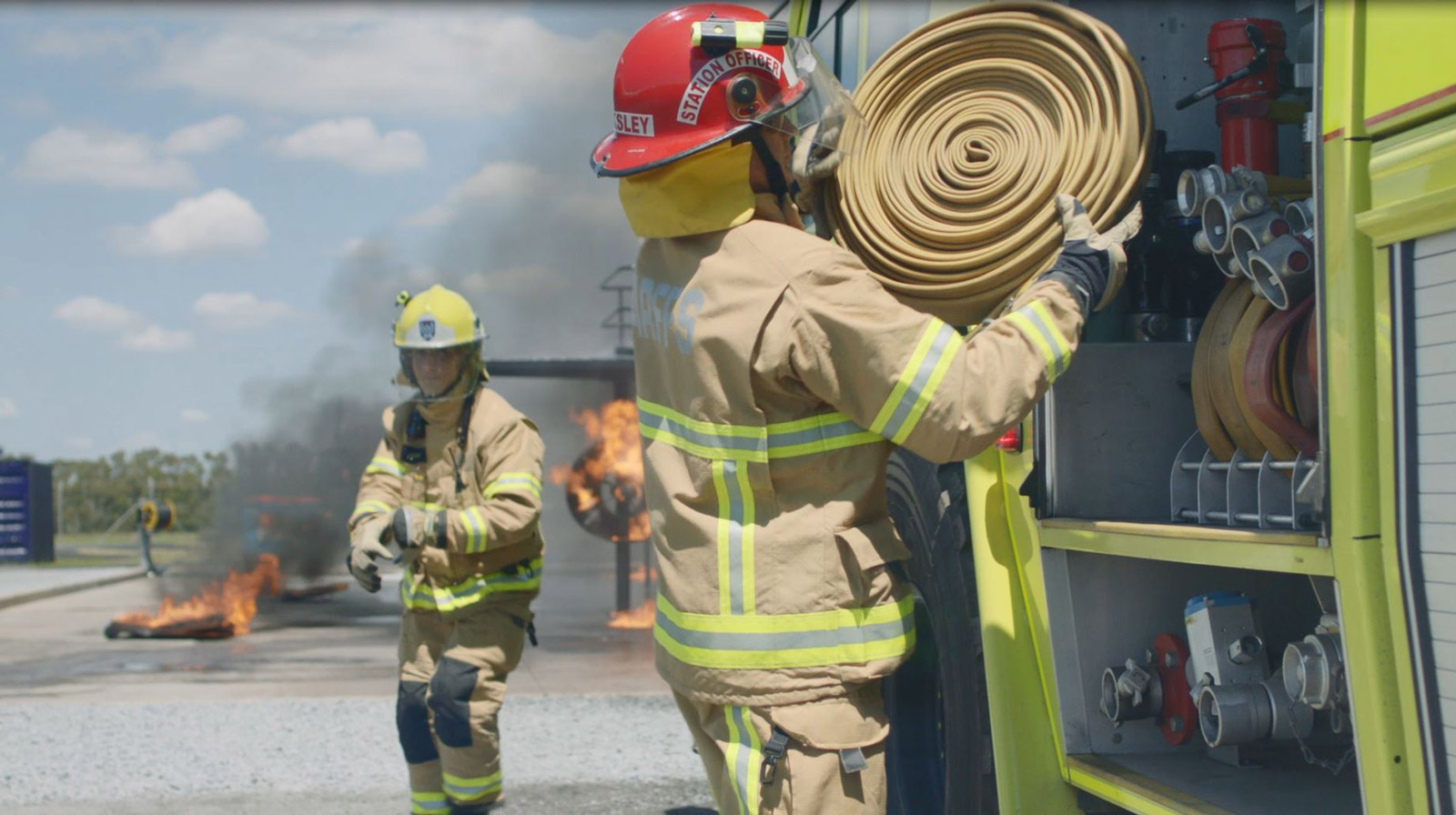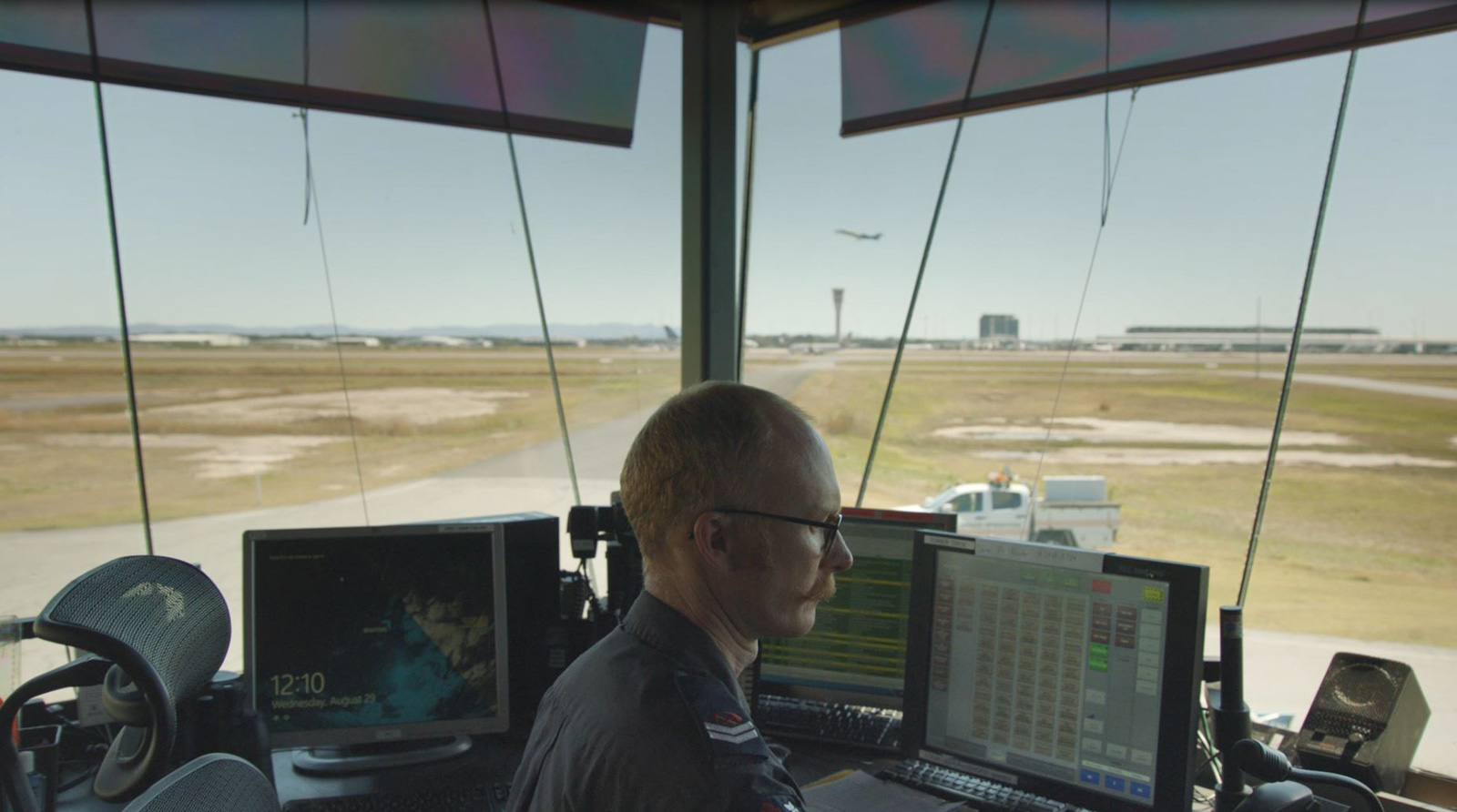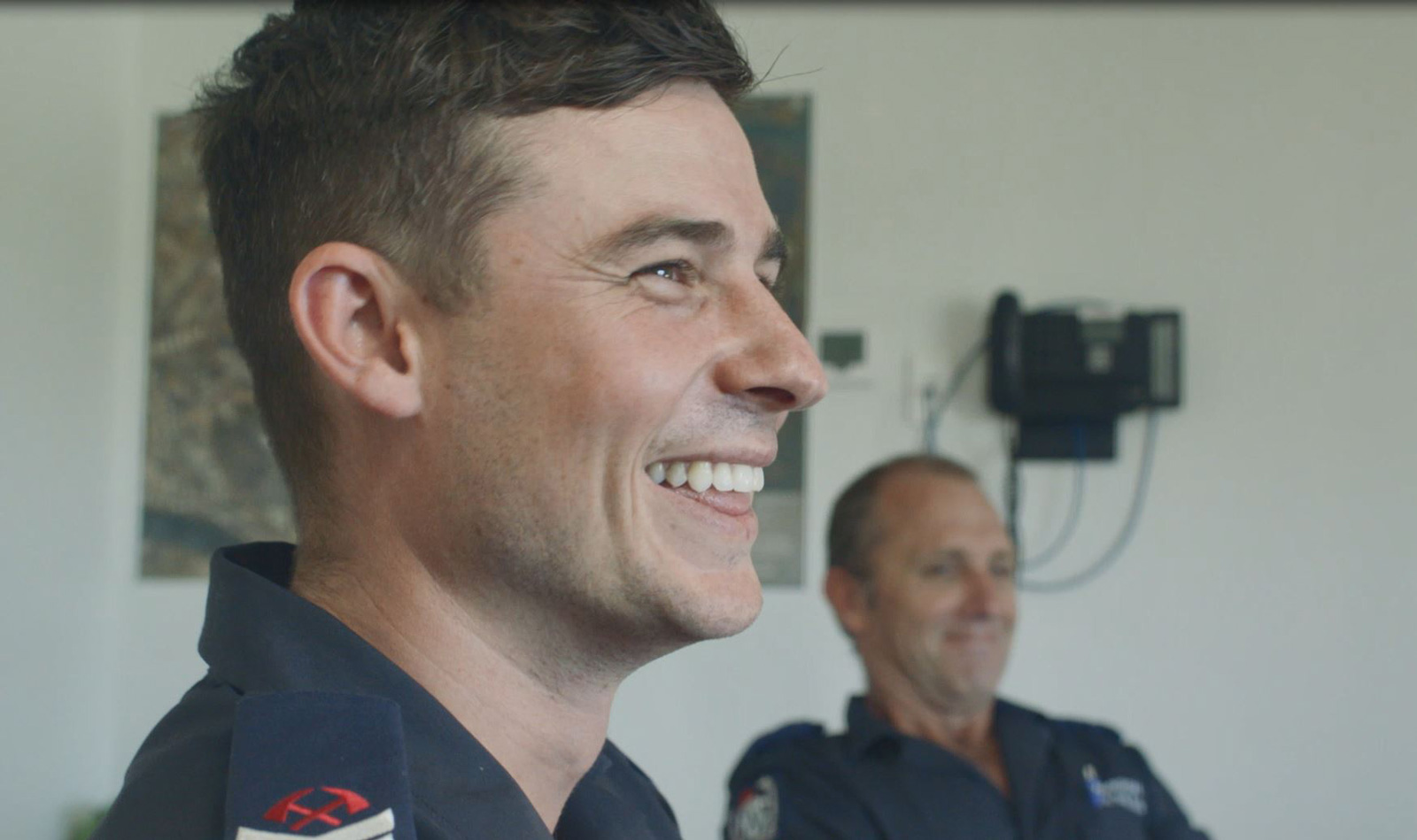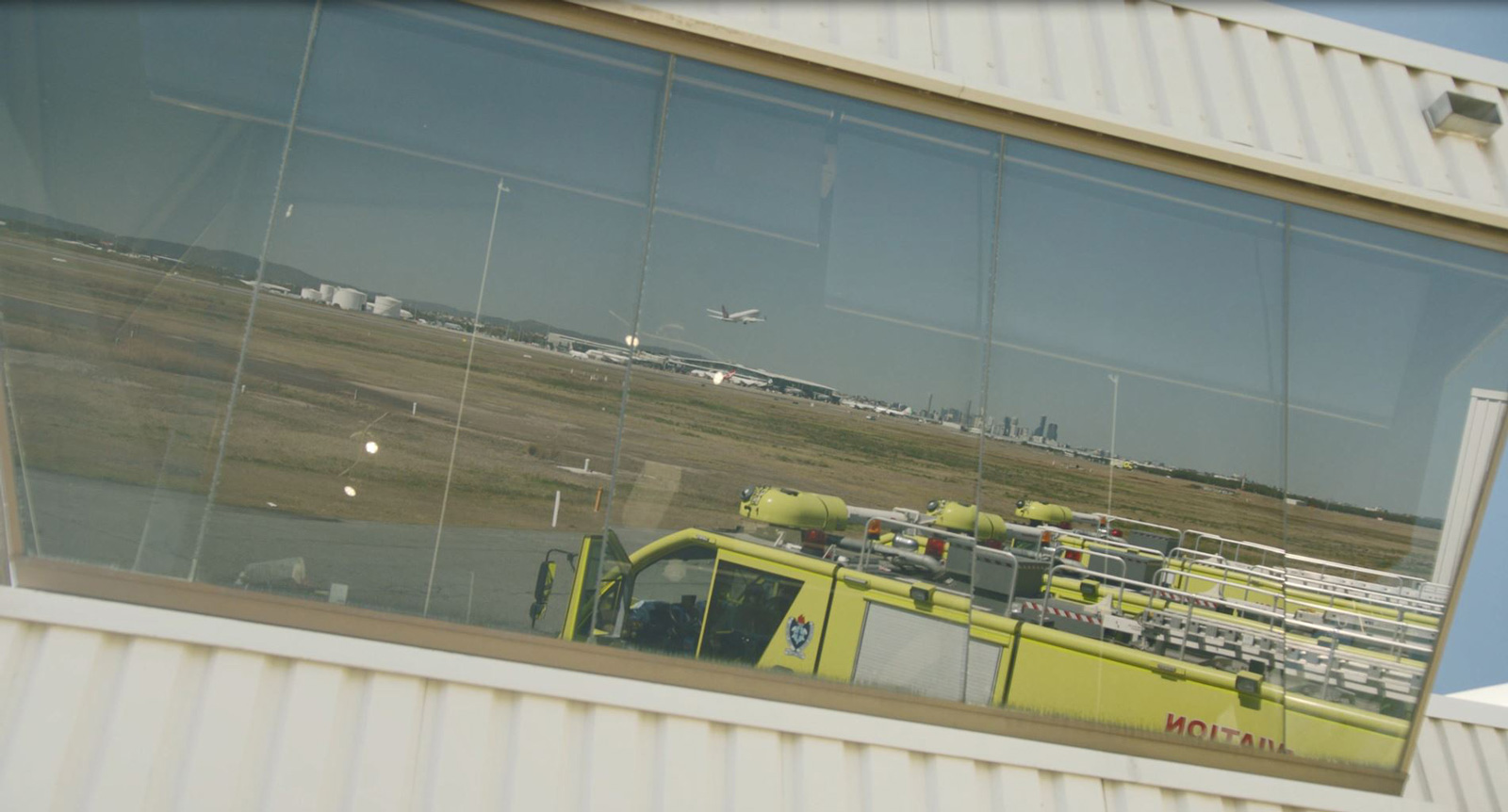
Tucked away on the far eastern perimeter of the airfield is one of Brisbane Airport’s best kept secrets. It’s a station where men and women stay for a career lifetime, working hard to keep more than 23 million travellers and 24,000 precinct workers safe every year, yet most people don’t even know it exists.
It is the Aviation Rescue Fire Fighting Service (ARFF). Operated by Airservices Australia, the primary function of ARFF is to rescue people and property from an aircraft crash or fire and from other fires on airport. ARFF is one of the largest and most highly trained professional aviation rescue firefighting services in the world, with more than 1,000 operational and support personnel working across 26 airports in Australia.
Here at Brisbane, there are around 80 men and women working as aviation fire fighters, and they are the first responders for incidents and emergencies that occur within Brisbane Airport’s 2,700 hectares. They even respond to incidents that happen within a one-kilometre radius outside of the precinct. It is a task that is made particularly complex when you consider they need to know all the local topography including the taxiways, rapid escape exits, surrounding roads and buildings.
For Leading Fire Fighter Lachlan Argus, every day at work is like a day spent with family – something that was an incredibly big drawcard for him before joining.
“It’s almost like having eighty brothers and sisters. I was a chippie before I became a fire fighter, and the relationships that you have in this job – I’ve never seen anything like it before in the outside workforce. It’s great and I couldn’t recommend it any more for anyone that wants to get into it. The bonds that you have, you have mates for life in this kind of organisation and job.”
So, what exactly does an aviation fire fighter do? It is worth highlighting that they start out completing a comprehensive three-month training course in Melbourne where they attain a Certificate II in Public Safety (Firefighting and Emergency Operations). The skills and competencies they develop throughout this course must be maintained on an ongoing basis, and this forms an important part of their day-to-day job.
“On our day shifts we have scheduled training that we go across each crew each day. We have core competencies that we need to do every three months to make sure our skills are all up to scratch, so this morning we went down to the drill ground where we did an aviation drill with the monitors and a few engine fires and ground fires.”
These core competencies have a lot of crossovers to those that the metropolitan fire fighters are required to maintain, but there are a number that are specific to fighting fires within an aviation environment. From driving and operating ultra-large fire vehicles, water branch work (use of hoses) and foam application, to knots and line work, use of ladders, boating and monitor operations, there is never a shortage of skills to refine and develop.
At Brisbane Airport, the resources and infrastructure to support ARFFS’ training is impressive. The drill ground overlooking Moreton Bay is where they undertake aviation drills, and there is a reason it is often referred to as the firey’s playground. Think fuel spills, engine fires, fully involved aircraft fuselage fires, and wheel fires.
“We’re lucky at Brisbane Airport. We’ve just had a station upgrade in the last 12 months, so I like to think we’ve got one of the nicer stations around Australia now.
“We’ve got all the resources you could possibly need – we’ve got the trucks behind us and we’ve got boats as we also look after the bay here as the water is right at the end of the runway. We’ve got some of the best boats you’ll find for water rescue around Australia.
They operate a fleet of Rosenbauer Panther Mk8 ultra-large fire vehicles, and they are every bit as impressive as their Hollywoodesque name suggests. If their distinctive bright yellowish-green colour doesn’t catch your eye, then their enormous build most certainly will.
At 10-metres long and 30-tonnes in weight, the Mk8’s are impressive. They are the largest fire-fighting vehicle in Australia, but despite their size, there is nothing they can’t do. They are the John McClane of fire-fighting vehicles! Designed to hold 9.5 tonnes of water, they can still travel at a speed of 120km/h and come to a complete stop in a matter of seconds. They can even throw foam in excess of 80 metres from their roof-mounted monitor.
“We have scheduled maintenance on the vehicles and all of our equipment that we go through each day to make sure everything is ready.”
Being ‘ready’ is the crux of the job, with fire fighters spending a considerable amount of time preparing for the worst-case scenario. Structural fire exercises, road accident rescue exercises, HAZMAT drills, water rescue exercises, and medical emergency drills are all in a day’s work.
“You’ve definitely got to have a lot of trust in each other in this kind of job. We go into some pretty dangerous situations, so you need to have that trust and belief that the bloke next to you or behind you is going to have your back and help you out. So that’s where building the trust levels and obviously how close you are with everyone in your crew really comes into play when you go to a job.”
Beyond the scenarios and exercises, they also observe and survey the airfield, with a Fire Control Centre (FCC) manned 24 hours a day.
“Up there, you have the role of oversight of the airport and you can see the runways, taxiways, you also monitor the radios up there, so you’ve got the tower talking to you and you can hear pilots talking to you and also all of the alarms, so that’s pretty much the brains centre of our station here. Anything that comes to us gets delivered through to the FCC and then gets passed down onto the floor to us.”
A lot gets passed down onto the floor. In the 2018/19 financial year, ARFFS responded to 6,755 emergencies and saved 21 lives. Across the 26 locations this equated to an average of 130 responses per week or 19 per day. And as the third busiest ARFF station in the country, it’s fair to say the men and women at Brisbane Airport responded to their fair share.
“We actually attend a lot of first aid callouts. So being first response, we’ll get there before paramedics most times. We get a lot of first aid calls each week.”
The excitement, comradery and sense of accomplishment go some way to explaining why so many choose to stay with ARFF for their entire careers. The work-life balance, being paid to train on shift, and having access to a variety of activities to do during the well-earned downtime explains the rest. Lachlan concedes he has the best job in the country.
“I still get excited each day to come to work. It doesn’t really feel like work when you come to something you love and enjoy, and you’ve got some of your best mates here and knowing that you’re out there doing something for the community and keeping people safe – it’s really enjoyable.
“I wouldn’t want to do anything else other than this.”

